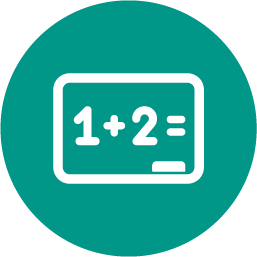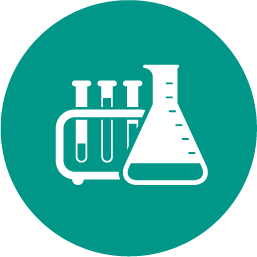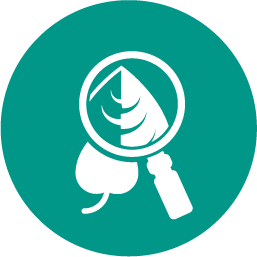Study Guide for BIO 163 for lecture test 3 on chapters 8, 9, and 10
First, before using this s...

Advanced Placement (AP), 28.03.2020 01:56 pennygillbert
Study Guide for BIO 163 for lecture test 3 on chapters 8, 9, and 10
First, before using this study guide, make sure you 1) answer the questions you missed on the quizzes given on the nervous system, 2) read and answer all questions in chapters 8, 9, and 10, 3) practice drawing and labeling a neuron, an AP graph, a transverse section of a spinal cord, a mid-sagittal section of the brain, the eye, and the ear, and 4) review your notes carefully, paying particular attention to the concepts, ideas, and terms to which I constantly referred in class and lab!
Know the structural & functional organization of the nervous system! That means knowing divisions, effectors, and all components/functions. Know parts & functions of a neuron; also, know the structural & functional classifications of neurons. Question example: What are multipolar neurons? And where would you find multipolar neurons? What is myelin? What cells make it? What are the two types of nervous message propagation? Know neuroglial cells in CNS and PNS, and know their functions. Know CSF circulation: where it is made, where it circulates, and where it is finally absorbed. What is resting (membrane) potential? Describe polarization, depolarization, hyperpolarization, and repolarization. What are voltage-gated Na+ channels, and what do they do? What are voltage-gated K+ channels, and what do they do? What are neurotransmitters? Examples? At NMJ? Know meninges for the CNS (and epidural hemorrhage, subdural hemorrhage, and subarachnoid space), and the epineurium, perineurium, and endoneurium of the PNS nerves. Where does sensory information enter the spinal cord? Where does motor information exit the spinal cord? What are horns? What are columns? Know names & functions of cranial nerves I, II, III, VIII, and X. Know spinal nerve plexuses, and what they innervate; and know innervation & functions of selected spinal nerves from the cervical, brachial, and thoracolumbar plexuses: phrenic, ulnar, median, radial, femoral, and sciatic. What are dermatomes? What is referred pain? What are reflexes (e. g., withdrawal reflex)? What is shingles? What is MS (multiple sclerosis)? What is PD (Parkinson’s Disease), ALS? Know parts of brain, and function: specific areas of interest are the diencephalon: hypothalamus, thalamus, epithalamus (pineal gland), and brain stem: medulla oblongata & pons differences in respiratory regulation, corpus callosum, precentral gyrus & post-central gyrus, et cetera. Know form & function of the ANS: sympathetic (thoracolumbar/ fight-or-flight/ adrenergic) and parasympathetic (craniosacral/ rest-and-digest/ cholinergic). Be sure to know specific effects of both ANS divisions, including pupillary dilation and pupillary constriction!!! What are sensory receptors? What are special senses? What are general senses? What are baroreceptors, proprioceptors, chemoreceptors, etc., and give examples in the body! Know parts & functions of the ear and the eye Your textbook and lab manual have excellent illustrations, and we went over answers to the questions in each lab. What lens treats myopia? What lens treats hyperopia? Think about accommodation (ciliary body changing lens shape for close or faraway focus). How does the hypothalamus really control all of the endocrine system? What hormones are made by the hypothalamus, and how do they work? What are the anterior and posterior pituitary hormones? What specifically does the T3 & T4 of the thyroid gland affect metabolism? Milk production is under the control of prolactin secreted from the anterior pituitary under control of RHs (releasing hormones) of the hypothalamus, and milk ejection is controlled by the OT (oxytocin, which is also responsible for uterine smooth muscle contraction in childbirth) made by the hypothalamus and secreted by the posterior pituitary. What is diabetic ketoacidosis?
If you have questions over the two-week Spring Break, please email me. Hoping to see you for the third lecture test on Monday, 30 March, unless the school goes online, in which case you will take it online.

Answers: 2


Another question on Advanced Placement (AP)

Advanced Placement (AP), 23.06.2019 04:31
Based on your observations of porto alegre and houston, what would you conclude about the longest and shortest days for the two cities on opposite sides of the equator
Answers: 2

Advanced Placement (AP), 24.06.2019 02:00
If the limit, as x approaches infinity (or negative infinity) of a function is equal to a, we say that the line y = a is a of the function f.
Answers: 2

Advanced Placement (AP), 25.06.2019 10:30
And intervening opportunity is an example of
Answers: 1

Advanced Placement (AP), 25.06.2019 14:30
What drifted apart millions of years ago to create two different worlds
Answers: 1
You know the right answer?
Questions

Mathematics, 12.09.2021 03:50

Chemistry, 12.09.2021 03:50





Advanced Placement (AP), 12.09.2021 04:00

Mathematics, 12.09.2021 04:00


Chemistry, 12.09.2021 04:00

Mathematics, 12.09.2021 04:00


History, 12.09.2021 04:00

Mathematics, 12.09.2021 04:00

Mathematics, 12.09.2021 04:00


History, 12.09.2021 04:00



Chemistry, 12.09.2021 04:00



